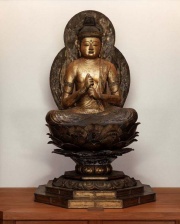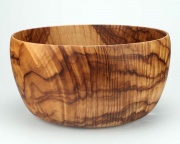Difference between revisions of "Camphorwood"
Jump to navigation
Jump to search
| Line 13: | Line 13: | ||
== Physical and Chemical Properties == | == Physical and Chemical Properties == | ||
| − | * 1) Small tree growing to 20 m. Bark=reddish brown with | + | * 1) Small tree growing to 20 m. Bark=reddish brown with irregular furrows. Leaves=ovate (to 25 cm) with wavy margins and smell of camphor when crushed Fruit=small ball (1 cm), purple when ripe |
== Additional Images == | == Additional Images == | ||
Latest revision as of 12:01, 22 June 2022
Description
1) The wood of the camphor tree, Cinnamomum camphora, native to southeastern Asia. Camphorwood smells strongly of Camphor and has been used for small carvings and decorative items. The camphor tree is considered an invasive species in Australia.
2) See Kapur.
Synonyms and Related Terms
kusu (Jap.); Campherbaum (Deut.); camphrier (Fr.); arbre à camphre (Fr.); alcanforero (Esp.); câmforeira (Port.); canforo (It.); Cynamonowiec kamforowy (Pol.); camphor wood; camphortree; camphor laurel
Physical and Chemical Properties
- 1) Small tree growing to 20 m. Bark=reddish brown with irregular furrows. Leaves=ovate (to 25 cm) with wavy margins and smell of camphor when crushed Fruit=small ball (1 cm), purple when ripe
Additional Images
Resources and Citations
- See [Uemera Dye Archive (Kusu)]
- G.S.Brady, Materials Handbook, McGraw-Hill Book Co., New York, 1971 Comment: p. 135
- Ralph Mayer, A Dictionary of Art Terms and Techniques, Harper and Row Publishers, New York, 1969 (also 1945 printing)
- Virginia Tech Dendrology website at www.fw.vt.edu/dendro/dendrology/main.htm (accessed Oct. 8, 2005)
- Wikipedia: http://en.wikipedia.org/wiki/Camphor_laurel (Accessed Oct. 8, 2005)





